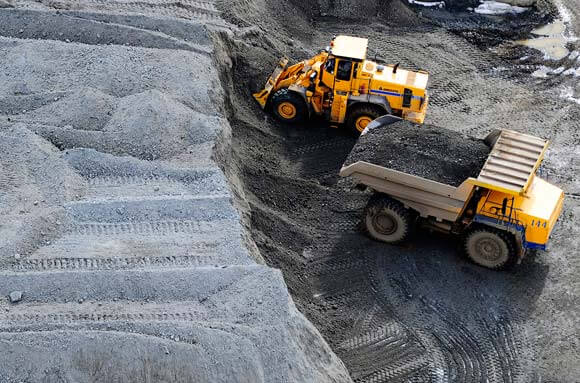Type
Mineral
Mineral Classification
Native element
Chemical Formula
C
Streak
Colorless
Mohs Hardness
10


Type
Mineral
Mineral Classification
Native element
Chemical Formula
C
Streak
Colorless
Mohs Hardness
10
Crystal System
Isometric
Color
Typically yellow, brown or gray to colorless. Less often blue, green, black, translucent white, pink, violet, orange, purple and red.
Luster
Adamantine
Fracture
Conchoidal
—Diamond Processing Plant—
8TPH Diamond Mining Process in Angola
18TPH Alluvial Gold & Diamond Mining Process in Angola
40TPH Diamond Washing Plant in Angola
50TPH Alluvial Diamond Mining Process in Central African
50TPH Diamond Extraction Process Flow Chart
60TPH Alluvial Diamond Extraction Process in Venezuela
75TPH Diamond Dense Medium Separation Process in Congo
200TPH Alluvial Diamond Mining Plant in Nigeria
250TPH River Diamond Processing Plant in Congo
500TPH Land Diamond Washing Plant in Congo

Kimberlite is less resistant to weathering, the kimberlite that reaches the earth’s surface is eroded by natural force like wind, rain, fluviation. Over thousands of years, eroded kimberlite carries rough diamonds downstream and enriches in the middle and lower reaches of the river, seashore and the offshore continental, form alluvial diamond deposit. The first diamond found in South Africa came from an alluvial deposit.
Alluvial mining is the world’s main source of diamonds, accounting for 40 percent of the world’s total diamond reserves, but 70 percent of its production. Many primary mines are found by tracing back the placer deposits.
According to the location of alluvial deposits: it divides into existing rivers (wet deposit mining) and ancient river (dry land diamond deposit mining).
Mining of wet alluvial diamond deposits generally uses two methods of excavation dredge and river diversion.
Excavation method: The suction dredger is equipped with heavy-duty suction pump, which simultaneously pump the gravel, mud, ore, discharge the water, and then picks the diamond ores. The excavation dredge method is not only used in river mines, but also suit for mining of marine diamond mines.
River diversion method: building a large dam in an area, drain the river water, collect the river gravel layer. Once the gravel is collected, it is hauled to the surface and prepared for processing, because the diamonds are often found in them.
Marine diamond mines are divided into three types: ancient beach mines, existing beach mines, and offshore mines, and offshore mine deposits can be mined at least 200m deep.
The earliest form of marine mining was coastal diving, in which swimmers collected diamond-containing gravel from the bottom of shallow seas. Nowadays, with the underwater mining technology development, the marine deposit mining equipment has upgraded to specialized mine dredger can carry out the work for diamonds deep out at sea.
Namibia’s coast is well known for marine diamond minerals, Debmarine Namibia mining ship is now the largest diamond mining ship in the world, 170 meters long, 33-meter tall ship, with a 98 member crew, it produces almost half the total diamond production of Debmarine Namibia every year.
1. raw ore mineral composition and their properties.
2. disseminated grain size
3. ore argillization property
4. surrounding rock fragmentation
5. content of clay in raw ore
6. value minerals content
7. diamond processing plant scale
8. requirements of diamond concentrate.
Stage 1 – Crushing
Once the diamond-bearing ore and gravel are collected, it is transported to a primary crusher. The primary crusher is responsible for reducing the size of the ore into smaller, more manageable pieces or chucks measuring no larger than 150mm. A secondary crusher, known as a roll-crusher, may also be used to reduce the size of the ore even further.
In the process of dissociation, the integrity of the crystal should be protected as much as possible. Therefore, the multi-stage crushing multi-stage sorting process is often used to separate the diamonds which have been separated by the monomer.
Stage 2 – Scrubbing
In this stage, the ore is scrubbed to remove loose excess material and is screened. Material smaller than 1.5mm is discarded because it is too costly to extract diamonds from such a small piece of ore.
Stage 3 – Cyclonic separation plant
During this stage the diamond bearing ore is mixed with a solution of ferrosilicon powder and water, which is measured to a specific relative density. This solution is fed into a cyclone, which tumbles the material and forces a separation. Materials with a high density sink to the bottom, which results in a layer of diamond rich concentrate.
Stage 4 – Recovery
Here, the diamond rich concentrate is put through a series or processes involving magnetic susceptibility, X-ray luminescence and crystallographic laser fluorescence that are calculated based on the specific properties of diamonds. These processes are designed to separate the rough diamond from any other heavy density materials collected by the cyclonic separation plant. For example, diamond’s fluorescence when exposed to an X-ray. Sensors detect flashes of light emitted by the diamond and sends a signal to a microprocessor that fires a blast of air at the diamond, which spits it into a collection box.
Stage 5 – Cleaned, weighed and packaged.
The diamonds collected in the recovery process are cleaned in an acid solution, washed, weighed and packaged in sealed containers for transport. In accordance with the Kimberley process, these containers are sealed with a tamper resistant seal, numbered on site, and a certificate of origin is issued.
If you have some questions about our products, please feel free to fill out the form below, and we will contact you within 24 hours. Rest assured that we won’t reveal your information to anyone.